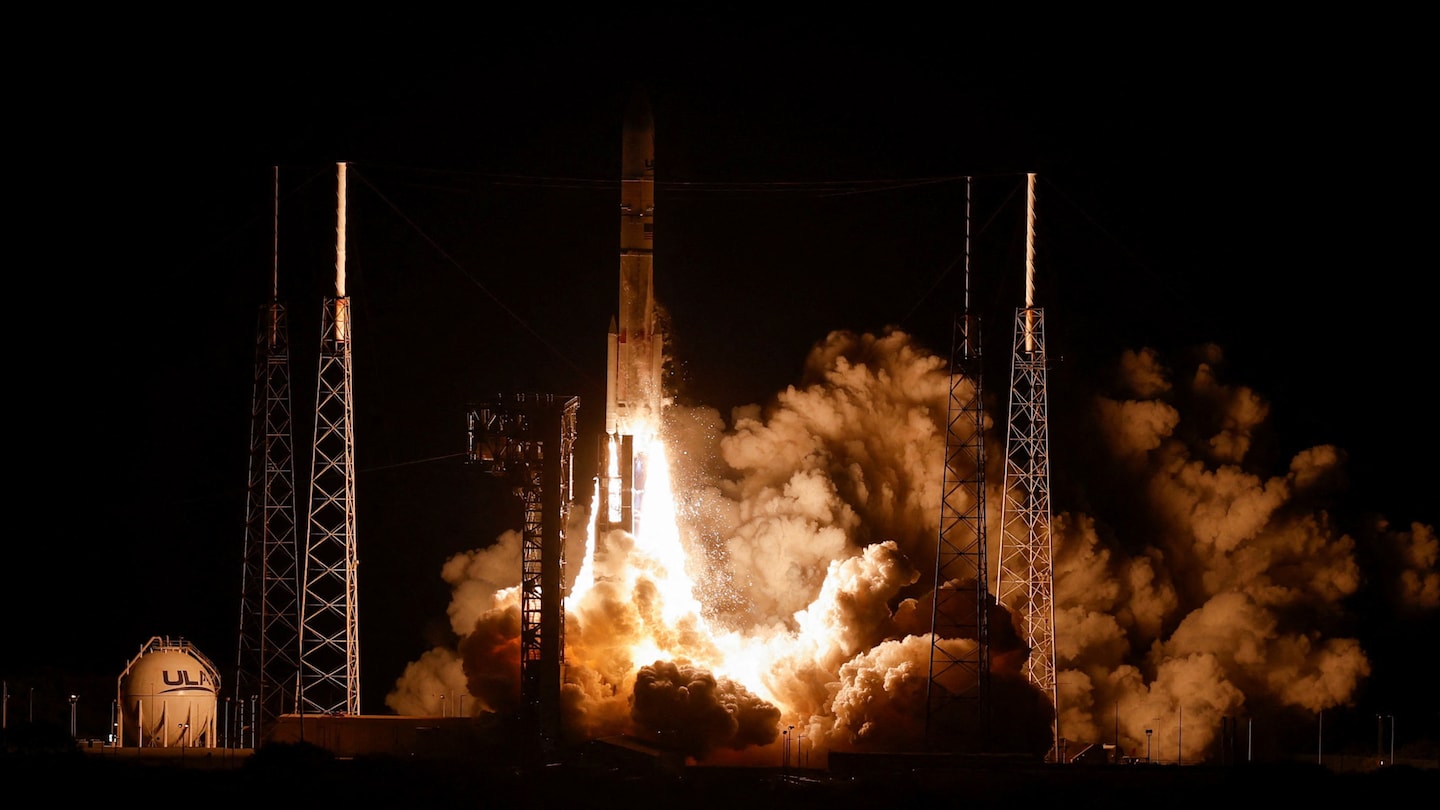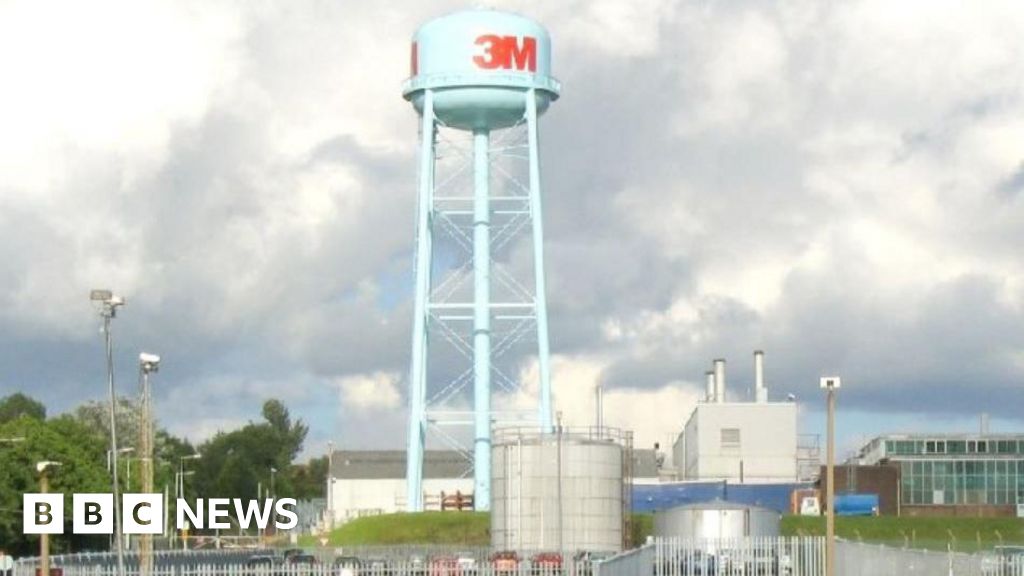
Astrobotic lunar lander launches successfully in mission of many firsts
- Science
- January 8, 2024
- No Comment
- 133
The Peregrine spacecraft, designed and operated by Astrobotic, an aerospace company based in Pittsburgh, carries a suite of science experiments but no people. Its launch at 2:18 a.m. Eastern was the first flight of the United Launch Alliance’s Vulcan rocket.
The spacecraft began communicating with the ground and activated its propulsion system, the company said. But then it encountered an issue that prevented the spacecraft from pointing toward the sun, a key requirement for its solar cells to generate power. “Unfortunately, an anomaly then occurred, which prevented Astrobotic from achieving a stable sun-pointing orientation,” Astrobotic said in a statement some seven hours after liftoff.
In a second update, the company said that an issue with the vehicle’s propulsion system was likely to blame and that could prevent the spacecraft from reaching the lunar surface. “As the team fights to troubleshoot the issue, the spacecraft battery is reaching operationally low levels,” it said. Astrobotic controllers “developed and executed an improvised maneuver to reorient the solar panels toward the sun.” it said. But shortly after that maneuver “the spacecraft entered an expected period of communication loss.”
The launch was only the first step in a perilous and complicated journey to the moon, but if all goes well, and controllers are able to fix the spacecraft’s orientation, the six-foot-tall lander is expected to touch down Feb. 23.
Even if that happens, Peregrine may get beat to the lunar surface by another company vying to become the first private venture to land a spacecraft on the moon. Intuitive Machines, a Houston-based venture led by NASA veterans, announced late Friday that it is aiming to land a spacecraft on the lunar surface on Feb. 22 or earlier, potentially eclipsing Astrobotic by a day. It is expected to launch in mid-February on a SpaceX Falcon 9 rocket.
The twin missions represent an extraordinary race, one between companies, not countries, as the growing commercial space sector seeks to extend its reach beyond low Earth orbit to the moon, some 240,000 miles away. It also is a significant moment for NASA, which commissioned the flights, with more to come, as part of an effort known as the Commercial Lunar Payload Services program. NASA plans to spend $2.6 billion on the effort over 10 years.
The missions are part of NASA’s Artemis program, which is aiming to return astronauts to the surface for the first time since the Apollo program, perhaps as soon as 2025. NASA is planning additional missions to bring science experiments and other payloads to the moon, including a robotic rover, which would drill for water in the form of ice near the lunar south pole.
Later this year, or in early 2025, NASA plans to send four astronauts, three Americans and one Canadian, on a trip around the moon that would set the stage for a landing sometime in the years to come. That mission would be the second flight of NASA’s Orion spacecraft, which traveled around the moon without anyone aboard in late 2022 before splashing down in the Pacific.
Monday’s launch also was significant as the inaugural flight of the new Vulcan rocket, which has been under development for years by ULA, a joint venture of Lockheed Martin and Boeing. First flights of rockets are notoriously tricky, and a successful launch is a coup for ULA when it is reportedly seeking suitors for a sale.
The company has scheduled as many as six flights for Vulcan this year and 28 next year, as it seeks to compete with SpaceX and its workhorse Falcon 9 rocket, which is aiming for 144 launches this year.
The flight is also significant for Jeff Bezos’s Blue Origin, which supplied the two BE-4 engines that powered the rocket’s first stage. Those engines have been in development for nearly a decade after Congress directed ULA to stop using engines made in Russia for its Atlas V rocket. (Bezos owns The Washington Post.)
The Pentagon has been eager for some time to use Vulcan for its sensitive national security missions as an alternative to SpaceX. But the rocket will have to complete a second flight successfully this year for the Defense Department to certify it as qualified.
Seven BE-4 engines also will propel Blue Origin’s New Glenn rocket, which Bezos has said will fly for the first time this year. Vulcan and New Glenn are to be used to launch Amazon’s Kuiper internet satellite network, which would beam signals to ground stations allowing connectivity to remote and rural areas. Amazon sees the system as competing with SpaceX’s Starlink constellation, which already has more than 5,000 satellites in orbit.
Peregrine is carrying 20 scientific instruments, including five from NASA that would study the behavior of water on the lunar surface. It is also carrying DNA samples and cremated remains, in partnership with Celestis, a Houston-based company. In a press release, the company said the samples “will remain on the moon as a permanent tribute to the intrepid souls who never stopped reaching for the stars.” The Navajo Nation, which views the moon as sacred, objected, however, and asked for the mission to be postponed but was unsuccessful.
Astrobotic’s Peregrine spacecraft will take a fairly direct route to the moon, but it won’t attempt to land until Feb. 23 as it loiters in lunar orbit waiting for the sun to shine on its intended landing spot, Astrobotic chief executive John Thornton said during a briefing before the launch.
While he said he was confident in the company’s ability to land the spacecraft successfully, he said he was well aware of the difficulties.
“It will be exciting, nail-biting and terrifying all at once — a whole range of emotions,” he said. “If you look back at the course of history, only about half those missions have been successful. And most of those have been funded by superpowers with vastly larger budgets than this mission has been granted. So it’s a really, really big challenge.”
Speaking on NASA’s broadcast after the launch, he said the mission “is the beginning of the dawn of the new era for the surface of the moon and how we think about space. This is an opportunity for commercial payloads to fly to the surface of the moon on a regular, routine basis. That means our nation’s scientists, our world’s scientists, can access the moon in ways never before possible.”
#Astrobotic #lunar #lander #launches #successfully #mission #firsts









